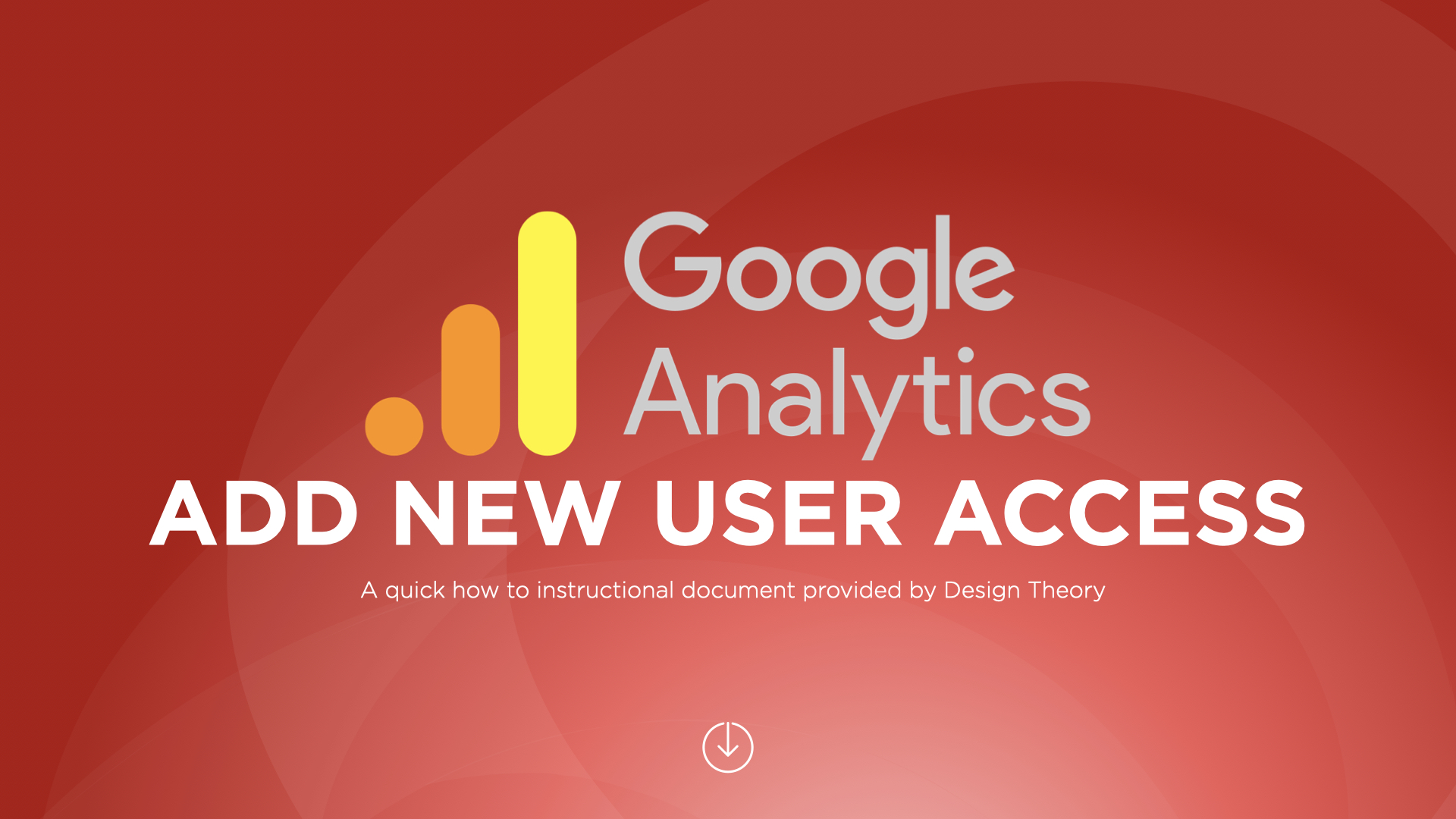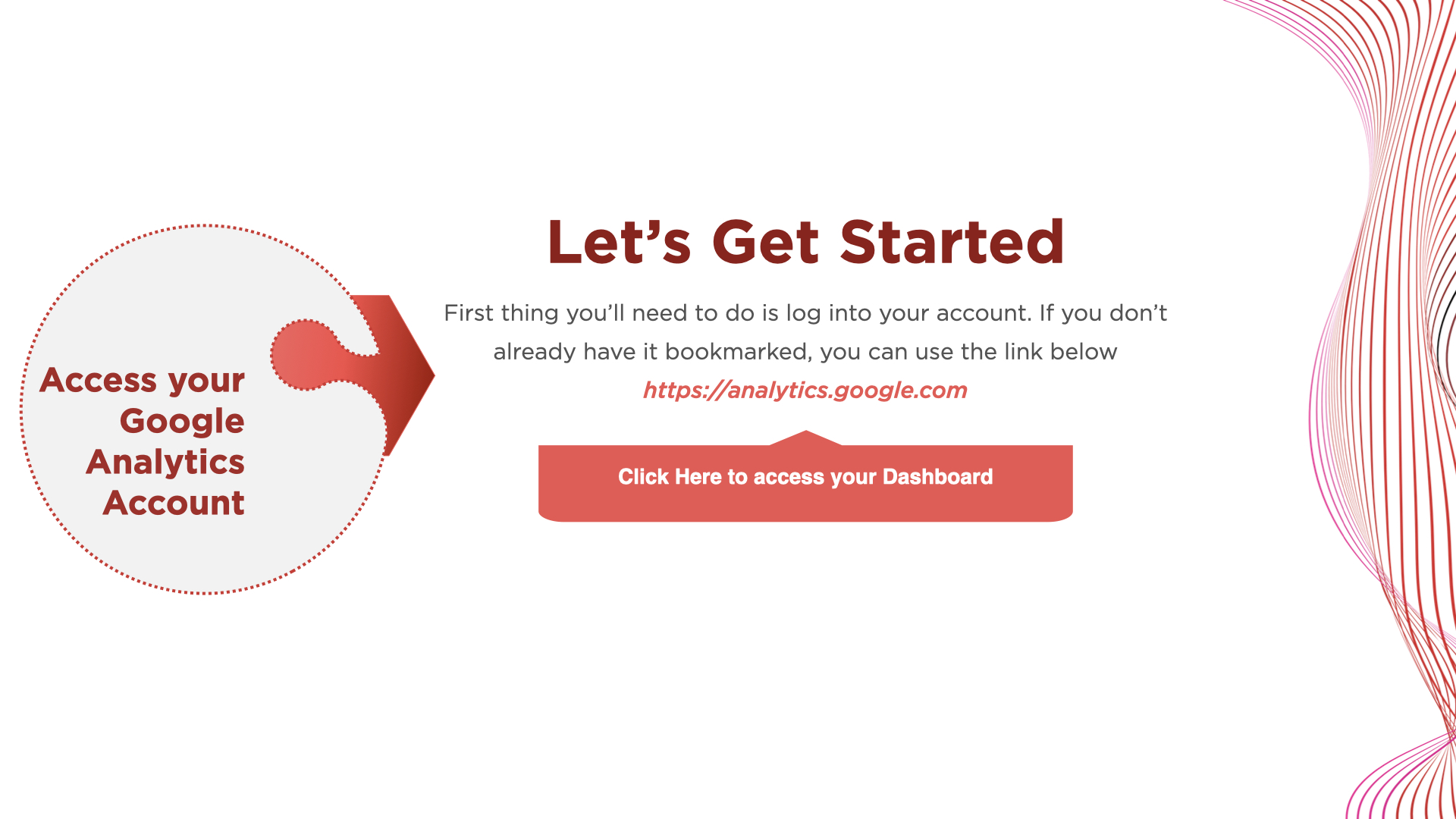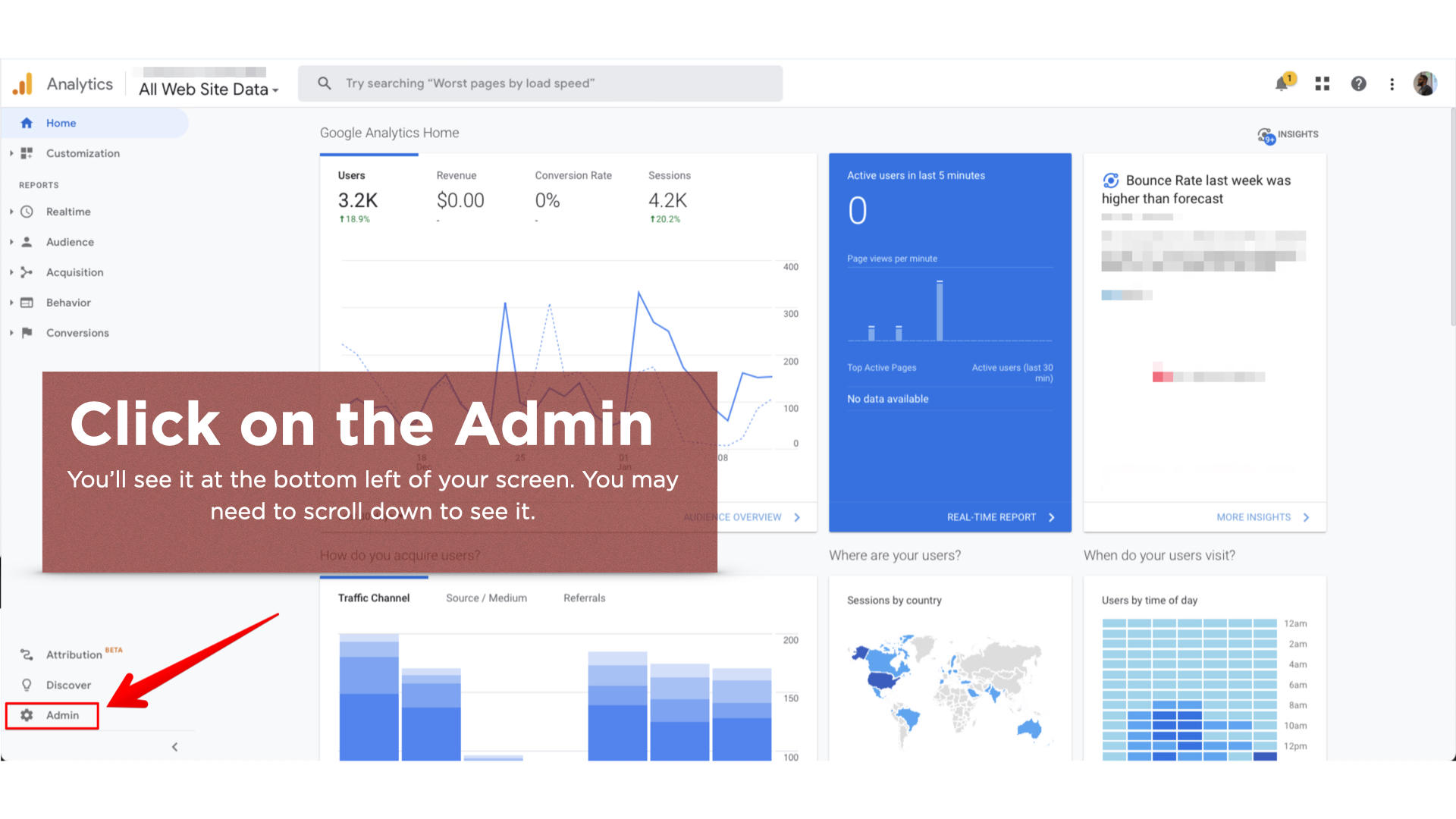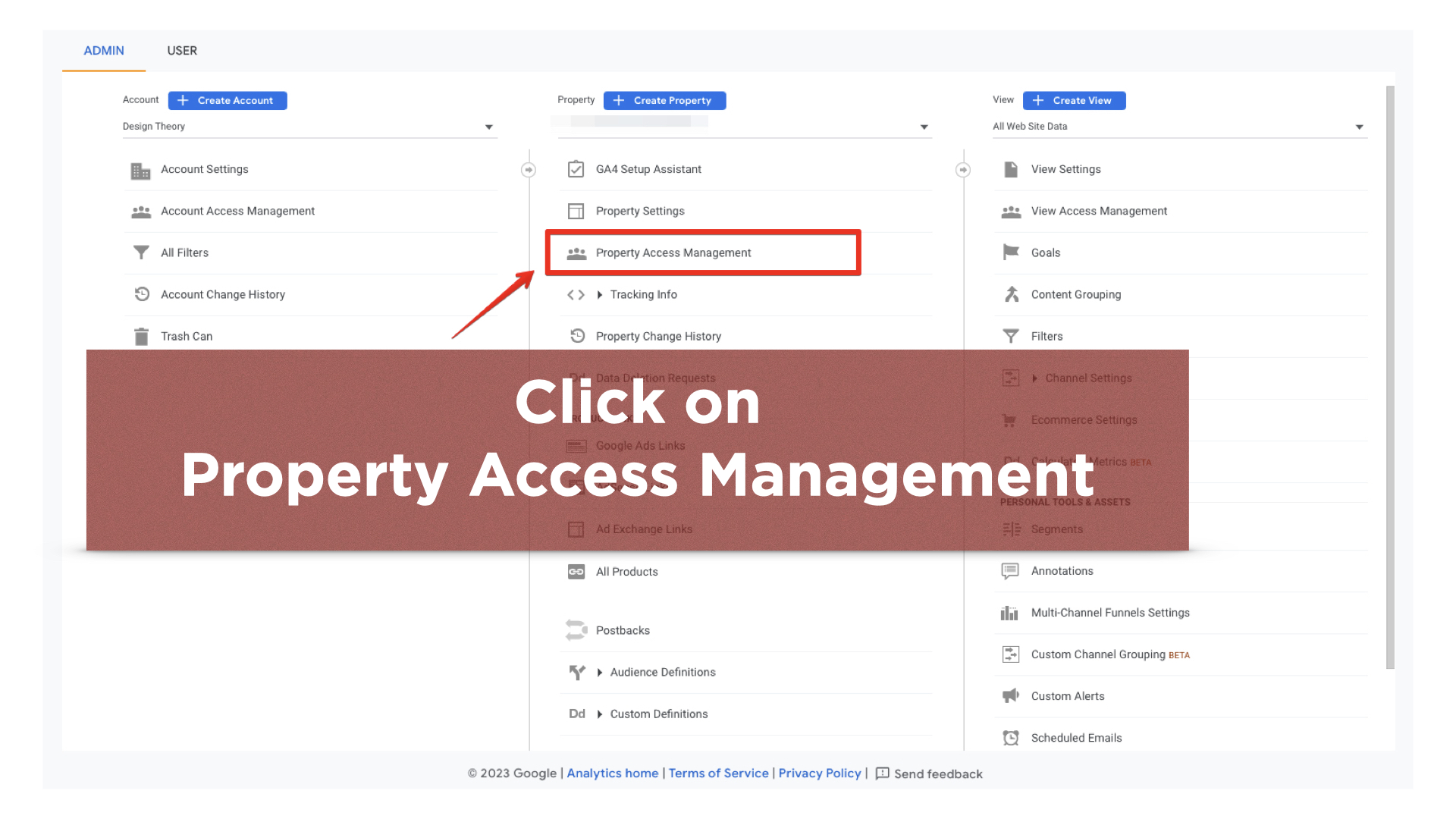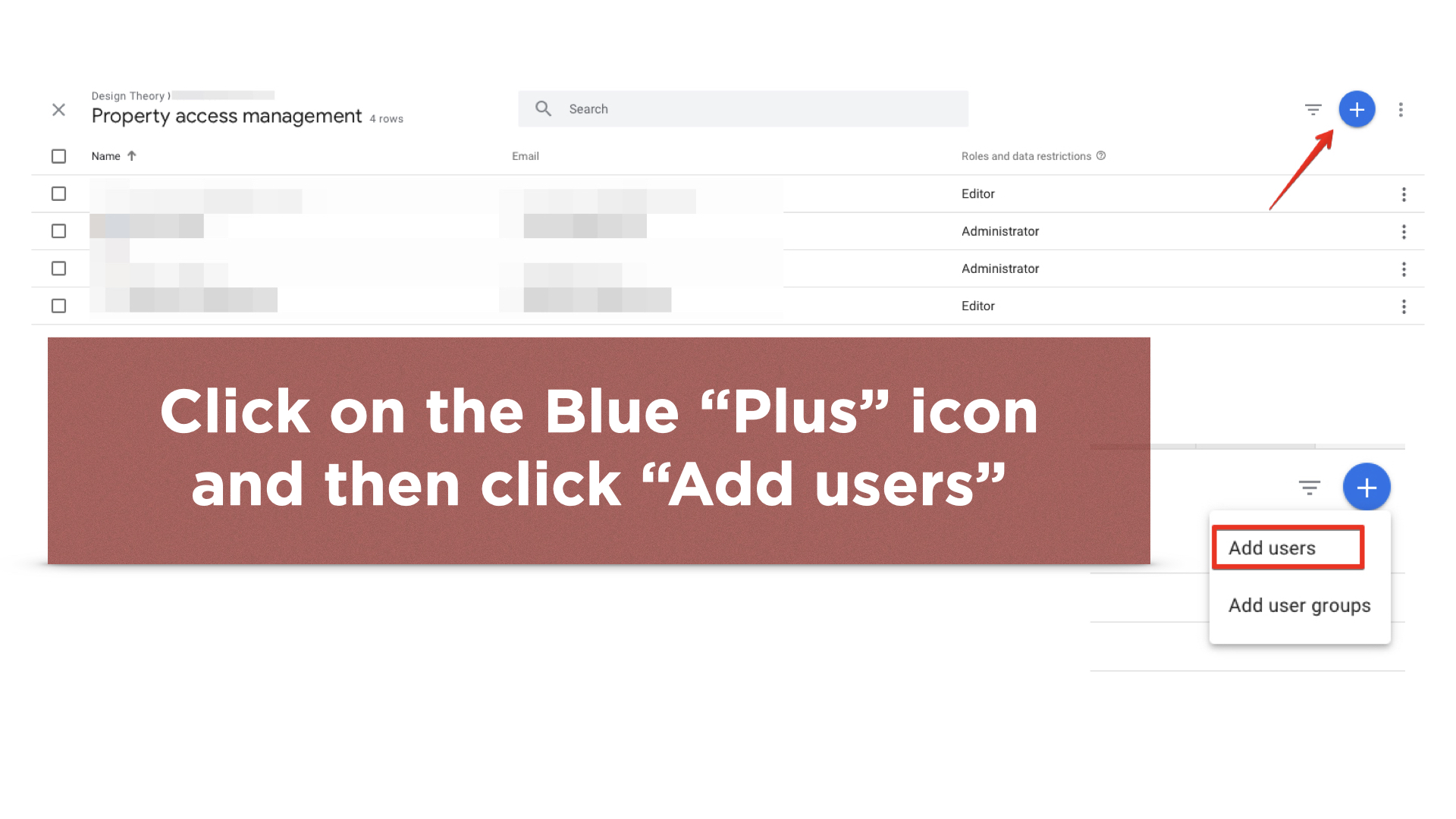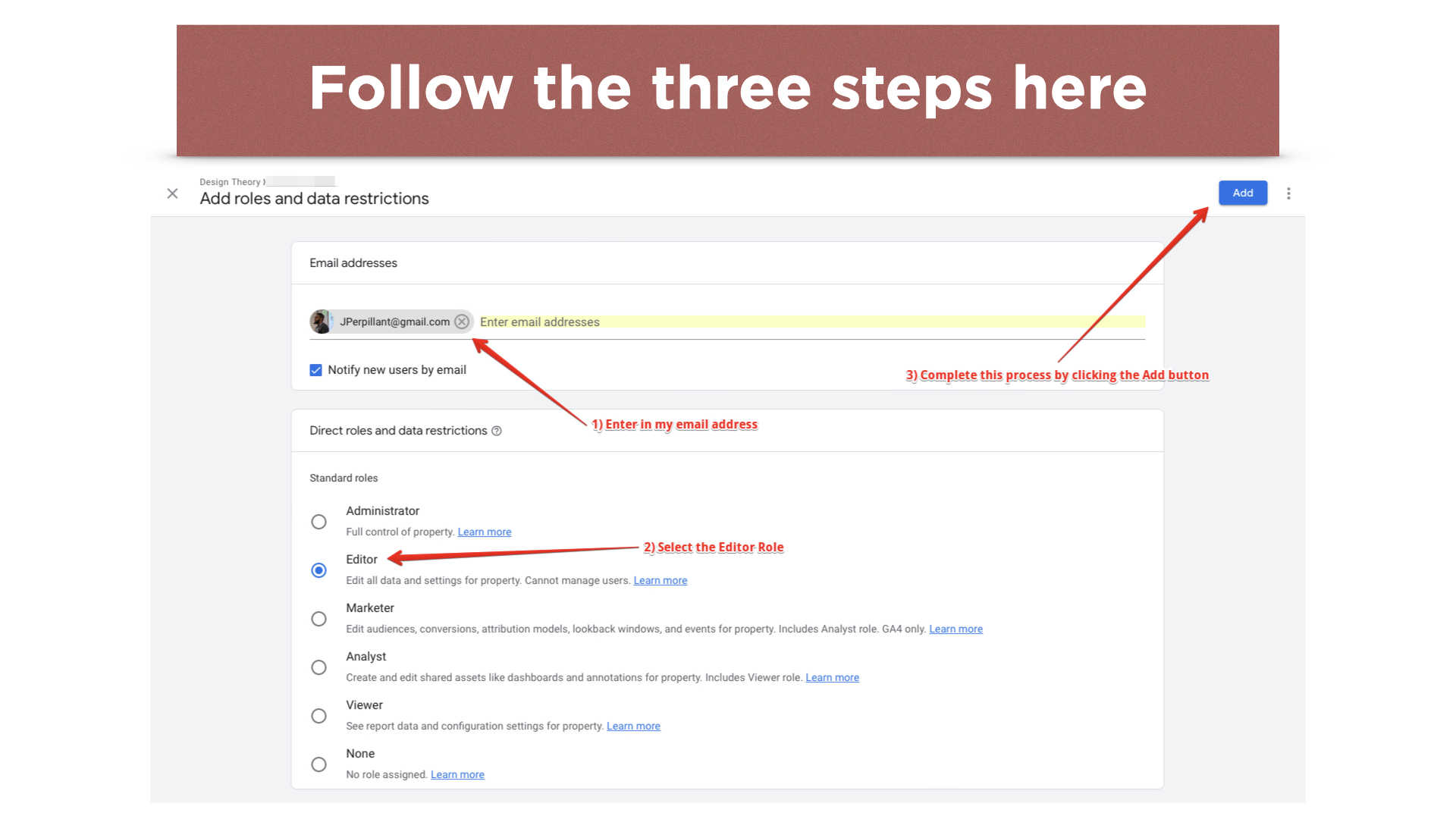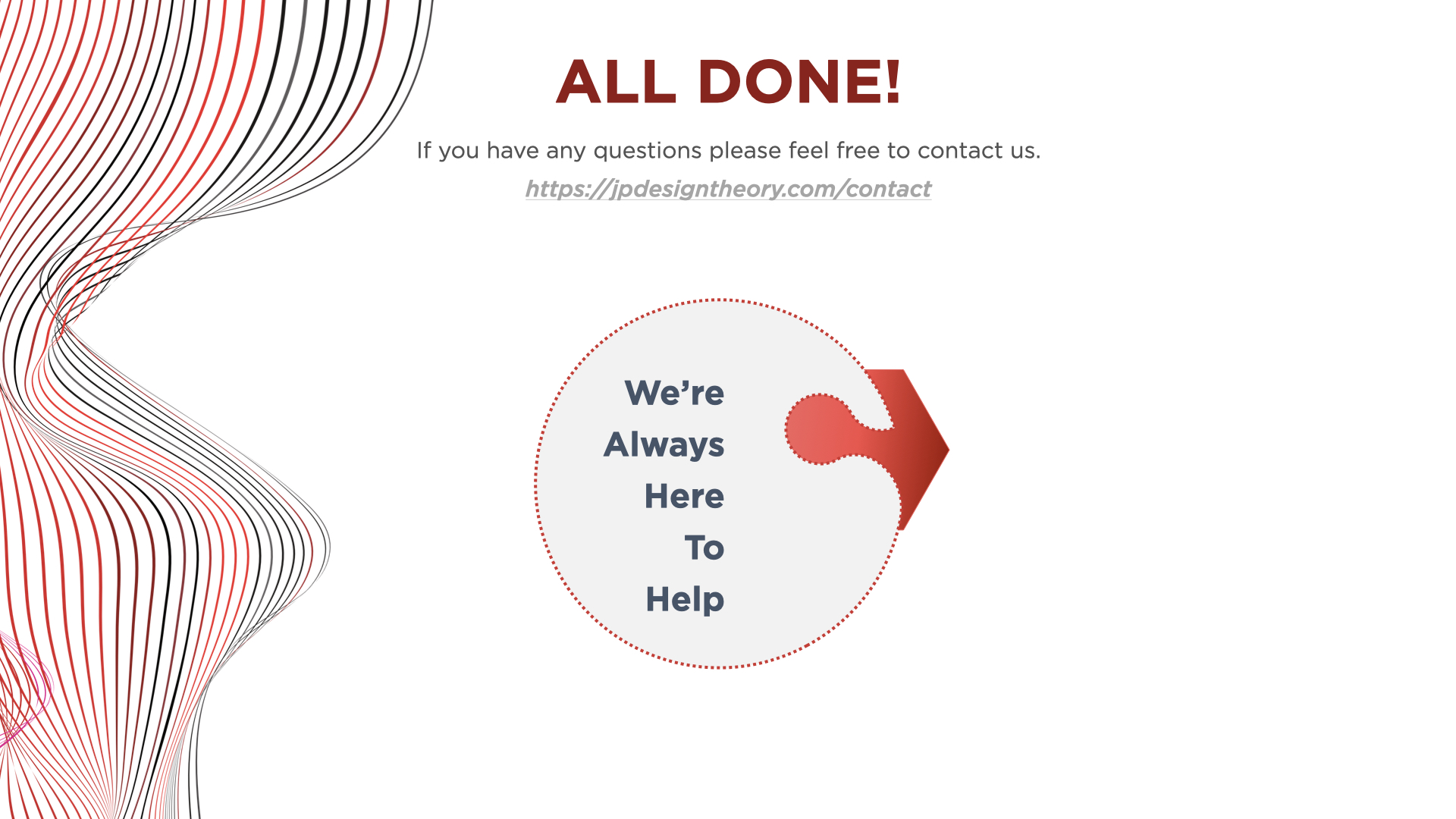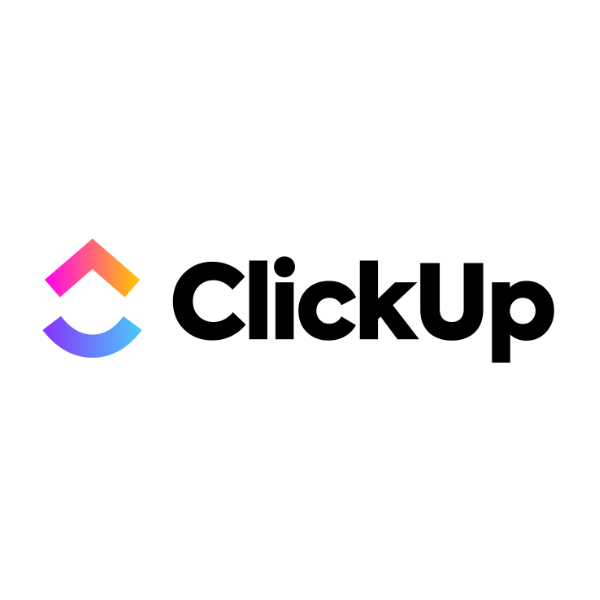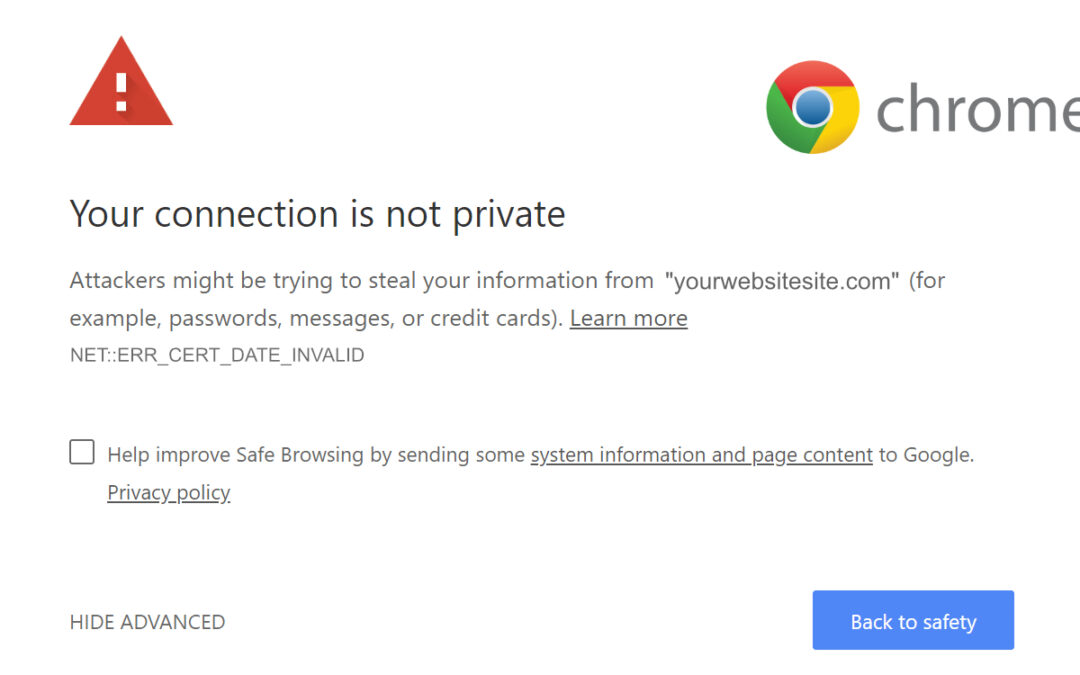
All Posts, Domains, Security, SEO, Web Development, WordPress
As the internet continues to evolve, website security has become a crucial aspect of ensuring a safe and trustworthy online experience. One of the most significant developments in this regard is the use of Secure Sockets Layer (SSL) Certificates. In this article, we’ll explore the reasons why it’s essential for websites to have an SSL certificate and why Google requires it.
What does it mean?
First, let’s define an SSL certificate. SSL is a standard security protocol that establishes an encrypted link between a web server and a browser. This link ensures that all data transferred between the server and the browser remains private and secure. SSL certificates are digital certificates that are issued by trusted third-party providers, known as Certificate Authorities (CAs). These certificates verify the authenticity of a website and encrypt all data transmitted between the website and the user’s browser.

Now, let’s get into why SSL certificates are crucial for websites
- Data Protection One of the most significant benefits of SSL certificates is data protection. Without SSL, all data transferred between a user’s browser and a website is transmitted in plain text. This means that anyone who intercepts the data can read and use it for malicious purposes. SSL encrypts all data, making it unreadable to anyone who intercepts it.
- Authentication SSL certificates also provide authentication. They verify the identity of the website, ensuring that users are communicating with the website they intended to. This helps prevent phishing scams, where attackers create fake websites to steal user information.
- Improved SEO In 2014, Google announced that HTTPS (the secure version of HTTP, which uses SSL) would be a ranking signal in its search algorithm. Websites with SSL certificates are given a higher ranking than those without. This means that having an SSL certificate can improve a website’s visibility on search engines, which can lead to increased traffic.
- Trust SSL certificates also create trust between websites and their users. Seeing the padlock icon in the browser bar and the “https” in the URL reassures users that their data is secure and that they can trust the website they’re visiting.
So let’s talk about why Google requires SSL certificates. In 2018, Google started marking all HTTP sites as “Not Secure” in the Chrome browser. This was part of Google’s plan to make the web a more secure place. Google wants to encourage all website owners to adopt HTTPS by making it a standard for all websites.
Google has also stated that websites without SSL certificates may be penalized in search rankings. As we mentioned earlier, SSL certificates are a ranking signal in Google’s algorithm. Websites without SSL certificates are seen as less trustworthy, and their rankings may be lowered as a result.
Our agency, Design Theory, has been informing our clients about a campaign we’re performing to have all of our client websites configured with an SSL Certificate. Great news if you’re already a client of ours, and if you’re not but want to get your SSL Certificate installed on your website, give us a call or email and we’d be happy to help you!
To wrap things up, SSL certificates are crucial for website security, data protection, authentication, SEO, and trust. Google requires SSL certificates to make the web a safer place and to encourage website owners to adopt HTTPS. If you’re a website owner, it’s essential to obtain an SSL certificate to ensure your website’s security and to maintain your search rankings.

All Posts, Business Strategy, Work Life
This is a touchy topic for me, and I want to be transparent about that right out of the gate. I’m one of those people that love checklists, task lists, agendas, timelines, and even time-boxing. But when I am starring at multiple project management apps, multiple lists, and multiple deliverables, it can be debilitating.
Setting realistic yet challenging goals is key to achieving success as a small business owner. By setting goals that are attainable, you can stay motivated and focused, but by making sure they are also challenging, you can push yourself to grow and improve.
Have You Heard About the SMART Framework?
A good way to set goals is by using the this structure of Specific, Measurable, Achievable, Relevant, Time-bound. I won’t get into each of them too much but the shortcut of all of those is to consider each part of that framework when you are creating or defining out your goals. If they don’t have each of these elements then chances are you won’t actually achieve completion. Remember, the “goal” of this is to be in or better align with your overall business objectives.
Keep your focus on the most important thing at the start of your day, which is to take action and make progress towards your goals, no matter how small. I can’t tell you how many times I’ve felt stuck or overwhelmed with so many things I want to get done or accomplish, but then shifting to low hanging fruit, or things that will give me a sense of completion really help boost motivation to go and tackle bigger things. We’ve all heard of “Eat That Frog” and sometimes doing that first makes the rest of what you need to do seem like easy downhill coasting. Every step you take, no matter how small, is a step in the right direction. And don’t forget to celebrate your successes along the way!
One last idea, put your goals out there in public. Peer motivation can also be a great motivator. Again follow the S.M.A.R.T. framework, and see how much more accountable you will feel and encouraged to digging into your goals and making consistent progress each day.
Download a free Goal Slide Deck Template: http://dthero.co/goalslidedeck
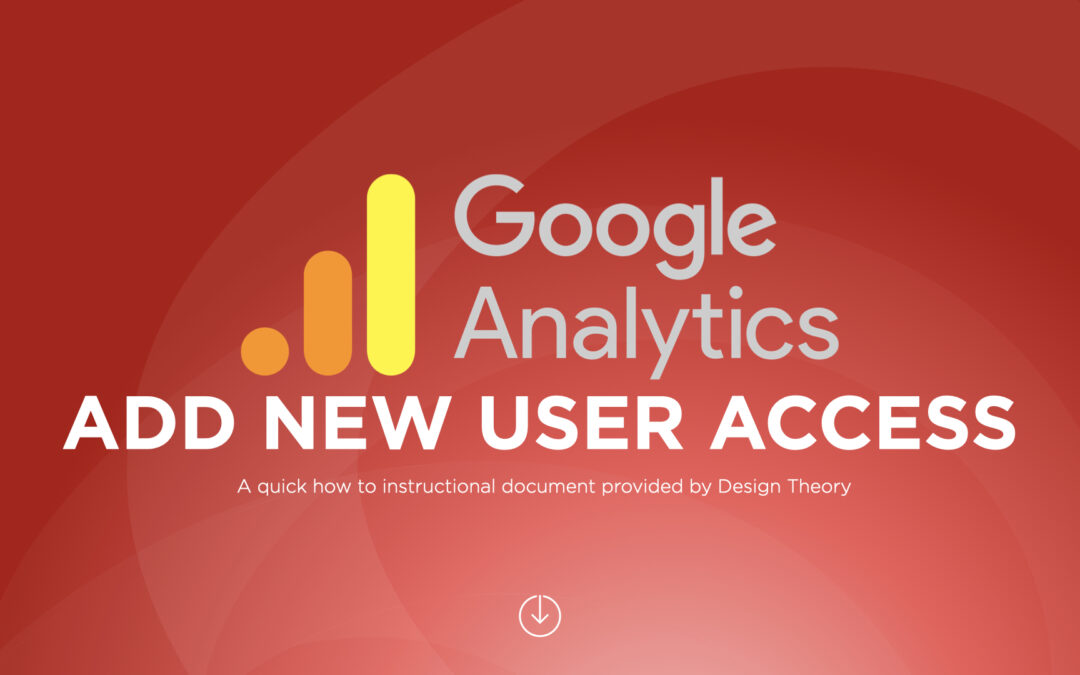
All Posts, How to, Marketing, SEO
Google Analytics is a powerful tool for tracking website traffic and user behavior. However, sometimes you need to share access to your Google Analytics account with other people, such as team members or clients. In this quick blog post, we’ll show you how to easily add a new user and provide specific access for Google Analytics, so you can collaborate and share data with others. Whether you’re a business owner, marketer, or developer, this will help you quickly perform this process.

All Posts
It’s that time of year when giving is on many of our minds. These gifts are our way of saying thank you for your continued support and patronage.They include a popular resource from us, as well as great tools and apps that are all things we use ourselves. We hope you make great use of these and if you have any questions please feel free to contact us.
Starting in January we will be including some free items that we can’t wait to tell you about, but also can’t wait to hear back from you on how you’re using them and gaining more success with your business.

All Posts, Marketing
You may have read headlines or seen references to lead conversions and if you’re not sure what this means or even where to start, this article is for you.
What is a Conversion
A conversion is when a potential customer has engaged with your brand or business in some form, and then proceeded to take an action. That action may be signing up for a mailing list, purchasing an item, followed you on a social platform, or even subscribed. The end result is whatever outcome you’d like for your potential customers to do. So take a minute and consider any marketing efforts you’re currently doing, like maybe you have a special deal on your website? A recent social media post? An email newsletter with links to videos or a survey? The options are endless, but still there is a measurable metric that will ultimately be calculated for the amount of potential customers/leads that you’ll be looking to attract.
What is a Lead
Simply put, a lead is a person who has interest in your product or service that can make a decision about buying. There’s a difference between people looking to kick tires, but don’t have authority to actually make a purchase. The conversation or content to those information seekers should differentiate them from their counterparts or management who are able to make purchasing decisions. A lot of times we create content that’s like spaghetti on the wall with the hopes that something speaks to the right person amongst all the mess on the wall. Truth be told, no one likes a mess, let alone want to eat off a wall.
How to Calculate Your Conversion Rate
Every business is different with regards to their prices for their products and/or services. So while we’re going to talk about conversion rates, I would suggest that you sit with your team and decide what is an acceptable goal that is something your business isn’t complacent with but is within attainable number.
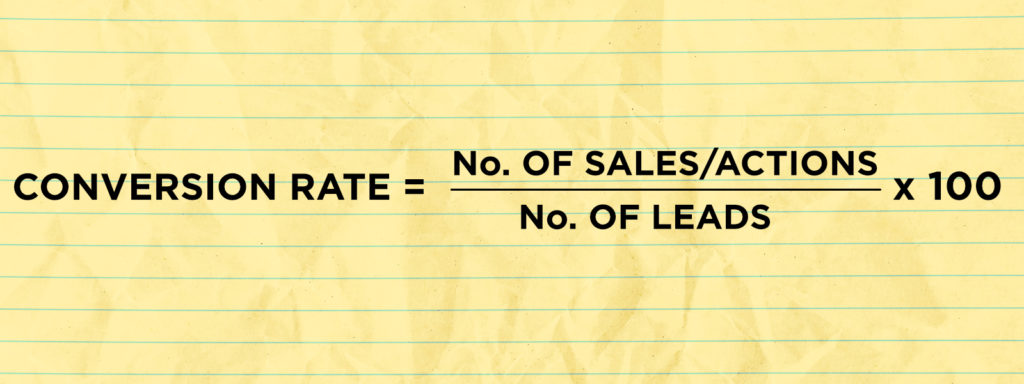
Ok so essentially to the formula for calculating your conversion ratio is: Conversion Ratio = Number of Confirmed Sales/Action, Divided by the Total Number of Leads Multiplied by 100. A common conversion rate is anywhere from 10-20%. When you step back and think about it, it’s a numbers game. The more leads you have the more potential sales you should have which ultimately boosts your bottom line.
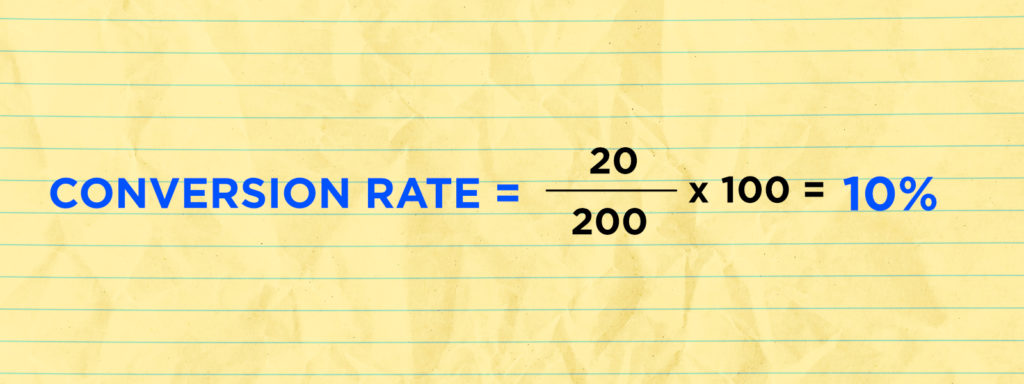
If in a week you are able to attract 200 leads and 20 of them convert, that gives you a 10% Conversion Rate. The other piece to this with your business is to see how consistent you are with your metrics. Are you consistently getting 200 leads? What are the marketing methods your using to attract those leads? If you were to double those efforts or marketing budget, would that also double the amount of leads? Could there be other marketing efforts through other channels and platforms that you can also track and measure to perform the same?
One last thing to point out here is that by doing this exercise, you can also calculate your cost per customer. This is called Customer Acquisition Cost (CAC). Since you know how many customers or leads you’re getting from the above equation, you’ll need to know how much it costs for your marketing efforts. This includes but isn’t limited to cost for flyers, business cards, ad-spend on social media platforms, Google Ad campaigns, article boosting and promoting, and more. Count all of your marketing costs up and divide that by the number of confirmed customers/sales. For example, if my monthly marketing costs is $1,000, and our business is averaging 100 customers a month, well my CAC is $10 or every new customer costs me $10. Now if each new customer purchases a product or service at least say $200, then my average sales for those same 100 customers will gross us $20,000. And again, if it only costs me $10 for each new customer, wouldn’t you say that’s a worthwhile budget and spending plan?
If you or your business needs help with formulating your conversion rate or you’d like ways to boost your metrics, feel free to contact us because we’d love to help.
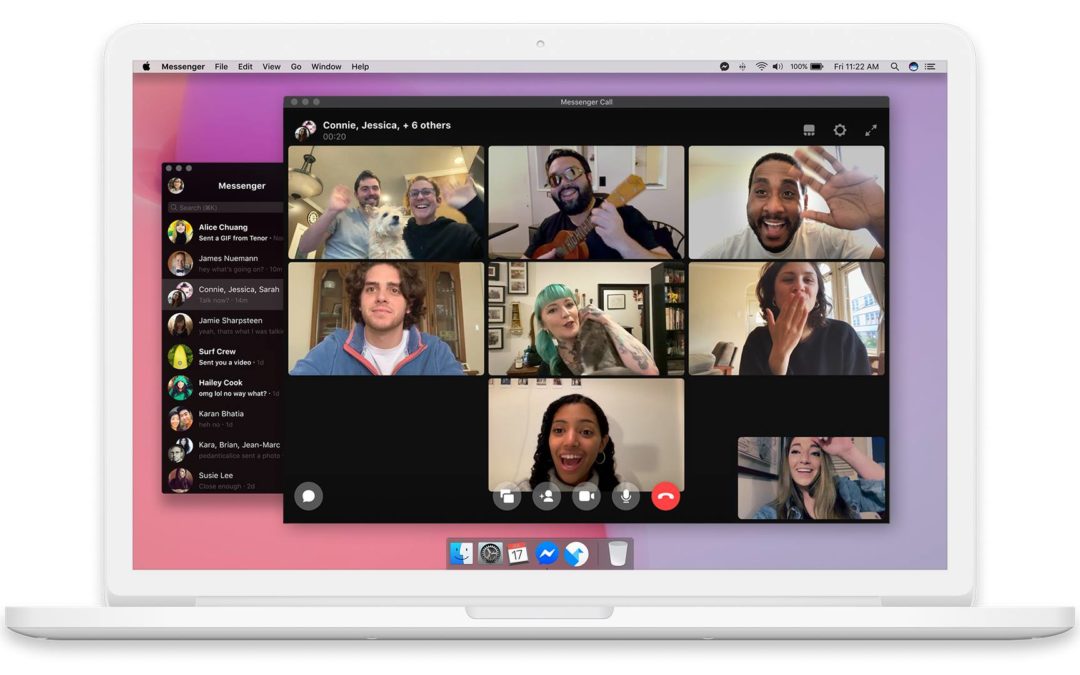
All Posts, Facebook, Social Media
I was going through some emails and came across a press release from F8 where they demo Messenger as a desktop app and that made me smile. So before I get into my view on this, you can go ahead and download it free on the Mac App Store as well as the Microsoft App Store. Both are free!
(Image and article source)
Now for me I use Facebook a little different. While Facebook has a BUNCH of different apps, I preferred it when they had all of the functions under one app. I imagine it was easier to maintain them as separate installs, but for me I hate having to switch apps to perform a function that I used to do while inside of one experience already. Additionally I don’t like having Messenger on my iPhone and resorted to using it on my iPad and through my browser as my main interaction point. Having it as a stand alone app on my laptop though saves me from using the additional device, but also keeps the Messenger experience to my main device; being my laptop. I use Messenger almost exclusively for business interactions so I like to keep my time of use of it to normal working hours, then close it and not get notifications or distractions from it until I’m ready to. Similar to how I treat emails during the day too by only opening my email app a few times a day and not having it open all day to distract me of every email of the many inboxes I manage. But I digress.
So check out the desktop offering and let me know what you think! Will you use it more or less than the mobile apps or through your browser?





